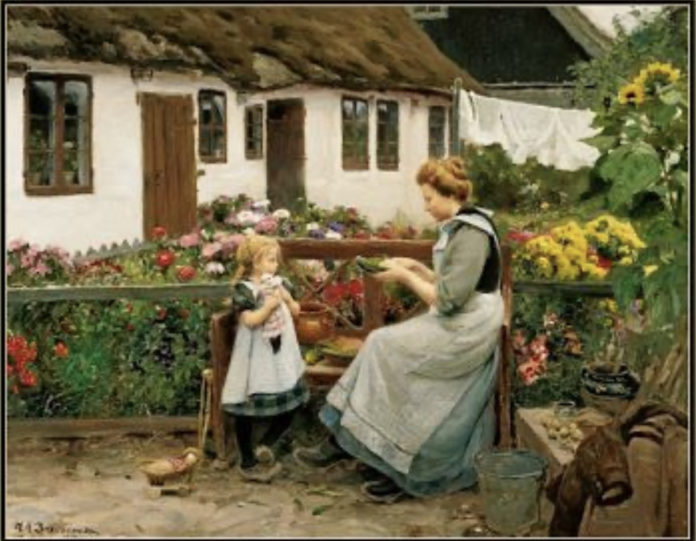 Traditionalists do not like the modern world, we find much to disagree with. One of those is the place of women within modern society. Our society wants women to either be equal with men or to replace men, like much Feminist thought it wants to keep its options open. We want men and women to be partners with each having their own sphere in which to operate without competing against the other.
Traditionalists do not like the modern world, we find much to disagree with. One of those is the place of women within modern society. Our society wants women to either be equal with men or to replace men, like much Feminist thought it wants to keep its options open. We want men and women to be partners with each having their own sphere in which to operate without competing against the other.
I want you to do a thought experiment, think of two societies, each with the same people and economy. In one every single job is carried out by women and not a single man has a job. Now I want you to think of the second society, in this one all jobs are carried out by men and not a single women has a job. Now both societies are extreme but only one of these societies could work. Which one?
The second society, the one where only men worked because in this society there would be a place for both men and women. But in the first society there is no place for men. Women are attracted, at least in part, by a man’s successes, money, position and status. A world in which men have none of these is a world in which there is no place for men, or women for that matter.
Liberalism insists that men and women are interchangeable and we know that not to be true. In a Traditionalist society men and women must have their own distinct place, their own distinct roles.
It was once said that ‘a woman’s work is never done’, that women were always busy. Ironically this is now as true as it ever was, but we no longer hear this said. Much of today’s busyness is spent in transit and not in actually doing the work, whatever that happens to be. When women worked at home, because that is what a Housewife does, she could prioritise work instead of needing to run around like a headless chook. But women still want to be needed and they want to be busy. They want a life plan that gives them all of the things that women have always wanted. A husband, children and a respected place within their community.
Instead of men and women competing against each other and each finding fault with the other. We need to restore the natural attractiveness that each sex feels for the other. To encourage that natural attractiveness, unlike Liberalism which seeks at each turn to destroy it. To that end, this is the path that women should have in a Traditionalist society.
- Marriage and children
- Volunteerism
- Education and jobs
Before the age of 25 most women should have married and have had a child. These things should happen when they are at their most beautiful, at their least cynical and when they are at their most healthy, with the most energy. That is the time to fall in love and to spread that love to their children. Not when life has made them hard and less attractive, but when life is in full bloom.
A women might need a job before she marries, this article has some great ideas for women of a Traditionalist bent.
Early career ideas for future homemakers
So what should a women do if she finds herself with time on her hands?
She should volunteer within her community to help those who need help. The elderly who need company and jobs done for them. The young who need looking after or a helping hand. The sick and those unable to look after themselves. This is the proper way for women to contribute to their community while still looking after their husband and children.
When her children are able to look after themselves some women may want to gain an official qualification or work. This is when that should take place, after she has had children, not before. Before becomes a way to stop women from having relationships and children. We want her to have both, a job or qualification is optional. A social worker who is a wife and mother would be better than one who has real experience with neither.
Work within the home is something that greatly aids society and helps create strong and durable families. Today it is undervalued, in a Traditionalist society it would be put back into its rightful place.
Originally published at Upon Hope. You can find Mark’s Subscribestar here.










